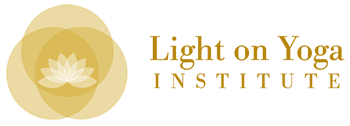“Of this there can be no question — creative work requires a loyalty as complete as the loyalty of water to the force of gravity. ..The working, concentrating artist is an adult who refuses interruption from himself, who remains absorbed and energized in and by the work — who is thus responsible to the work…” Mary Oliver
The intention was to take it easy today, not to do too much, but once it started “I” am not in charge. What “I” might have wanted or intended is left somewhere at the door with the shoes. The only thing left to do is to try to relax on the trip that is the practice: relaxing the head, the face, the neck, the jaw, the eyes, the shoulders—surrendering the misperception of having control.
Practice eventually arrived at working on the Vśrchīkāsana that my teacher taught me when I saw him last. A little improvement here from the latest efforts but still not as deep as with his assistance, even though my body was working “cold” before class. Sometimes It’s better cold, sometimes it’s the last backbend (or two) that’s practiced. The difficulty with it means more questioning, more searching, more practice—realizing more understanding. Always there is further to see: the unknown keeps growing and expanding, like the horizon. It’s always distant, vast space. extending the exploration extends the bliss.
















